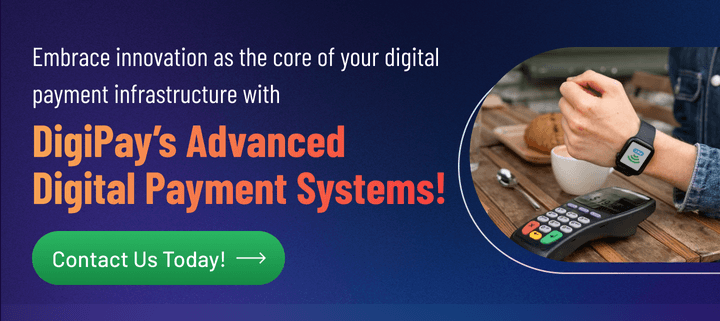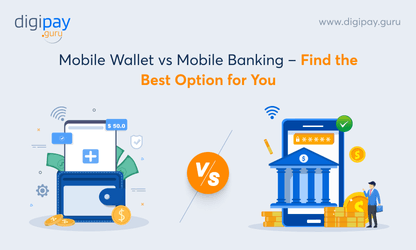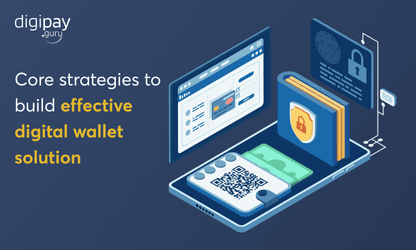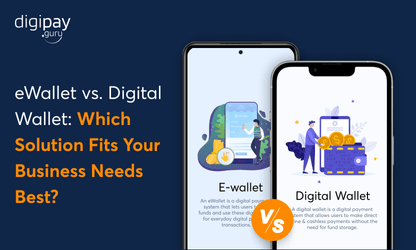Digital payment infrastructure refers to the systems, technologies, and processes that enable electronic transactions between parties. It encompasses a wide range of payment methods including mobile payments, online payments, and contactless payments.
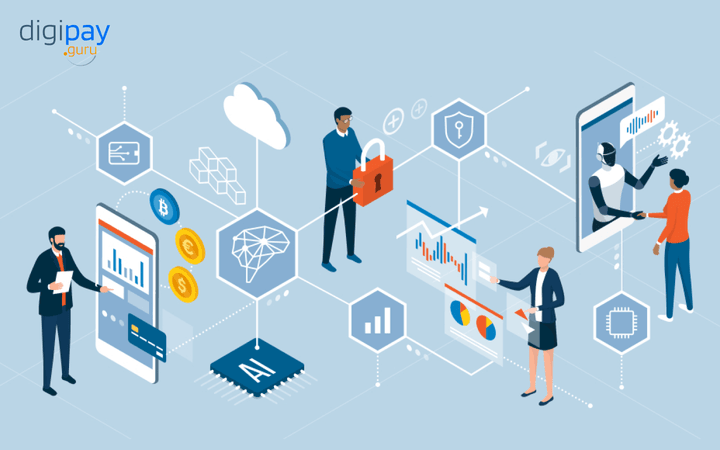
It also includes the underlying technologies such as blockchain, AI, and machine learning, as well as the regulatory and legal frameworks that govern these transactions.
The purpose of this blog is to explore what's next in digital payment infrastructure. We will take a closer look at the latest innovations in this field and examine what they mean for the future of digital payments.
Key Innovations in Digital Payment Infrastructure
Contactless Payments
Contactless payments refer to transactions made without the need for physical cash or cards. Instead, customers can use their mobile devices or payment cards equipped with near-field communication technology to make purchases. Contactless payments are becoming increasingly popular due to their convenience and speed.
Advantages of Contactless Payments in Digital Payments
| Convenience | Enables users to make payments quickly and easily, without the need for cash or physical cards. |
|---|---|
| Increased speed of transactions | Allows for near-instant transactions as they are processed and verified in real-time, reducing the time required for settlement. |
| Enhanced security | Provides extra security layers such as tokenization, encryption, and secure authentication methods which reduces the risk of fraud and hacking. |
| Reduced contact | Reduces the need for physical contact, improving hygiene and reducing the risk of transmitting disease. |
| Increased accessibility | Allows for financial transactions to be conducted by an individual with a compatible device. Thus, improving reach for people without access to traditional banks. |
| Easy integration with other financial services | Can be easily integrated with other financial services, such as mobile banking, providing users with a comprehensive suite of financial services accessible from their mobile devices. |
| Increased adoption | As contactless payment solutions become more widespread, the adoption of contactless payments is likely to increase, further improving accessibility and reducing the need for traditional payment methods. |
| Reduced transaction costs | No intermediaries in the transaction cut down the fees which were a must in traditional payment methods. |
Covid-19 has accelerated the adoption of contactless payments. And, contactless payments are expected to continue to grow in popularity, as more consumers adopt mobile devices, payment cards, and digital wallet solutions equipped with NFC technology.
Additionally, advancements in technology such as biometrics and AI are expected to further enhance the security and convenience of contactless payments.
Read More: How contactless payments accelerated during covid 19
Mobile Payments
Mobile payments refer to transactions made using a mobile device, such as a smartphone. Mobile payments can be made in a variety of ways, including mobile apps, digital mobile wallets, and SMS-based systems. Mobile payments are becoming increasingly popular, as more consumers embrace the convenience and versatility of mobile devices.
| Convenience | Enables users to make seamless and smooth payments through their mobile devices thereby enhancing convenience. |
|---|---|
| Increased accessibility | Anyone with a mobile device and internet connection can conduct these transactions |
| Enhanced security | Provides multiple layers of security, including biometric authentication and encryption, reducing the risk of fraud and hacking. |
| Real-time transactions | Allow for near-and instant transactions as they are processed and verified in real-time, reducing the time required for settlement. |
| Increased mobility | Allows for financial transactions to be conducted from anywhere, at any time, improving mobility and reducing the need for physical ATMs or banks. |
| Easy integration with other financial services | The integration with related financial services such as mobile banking is very easy here making it an added advantage. |
| Increased adoption | As mobile devices become increasingly ubiquitous, the adoption of mobile payments is likely to increase, further improving accessibility and reducing the need for traditional payment methods. |
| Reduced transaction costs | Eliminate the need for intermediaries, reducing the fees associated with traditional payment methods. |
In the future, mobile payments will be characterized by increased adoption and integration with other payment methods. For example, many consumers are already using mobile payment apps in combination with contactless payments and traditional payment credit cards.
Additionally, advancements in technology such as biometrics and AI are expected to further enhance the security and convenience of mobile payments.
QR Code Payments
QR code payments are a type of contactless payment that uses a smartphone camera to scan a QR code displayed on a merchant's POS terminal. The user then confirms the payment through a mobile app.
Advantages of QR code payments in digital payments
| Convenience | QR code payments are fast, simple, and can be made with just a mobile device and a compatible app. There's no need to carry cash or cards, and transactions can be completed in seconds |
|---|---|
| Security | QR code payments are secure because they don't transmit sensitive information like credit card numbers. Instead, they use encryption and tokenization to protect personal data |
| Cost-effectiveness | QR code payments are generally more cost effective than traditional payment methods because they don't require expensive point-of-sale terminals or hardware. |
| Flexibility | QR code payments can be used in a variety of settings, including in-store, online, and P2P transactions. They can also be used for a wide range of transactions, from small purchases to large ticket items. |
| Data tracking | QR code payments can provide merchants with valuable data on customer behavior, including transaction history, purchase patterns, and customer demographics. |
Biometric Authentication
Biometric authentication uses physical or behavioral characteristics, such as fingerprints, facial recognition, or voice recognition, to verify a user's identity. This biometric technology in digital payments has improved the security of payments by reducing the risk of fraud and identity theft.
Advantages of Biometric Authentication in Digital Payments
| Increased Security | Biometric authentication uses unique physical characteristics of the individual, making it difficult for fraudsters to replicate or steal. This provides a higher level of security compared to traditional authentication methods such as passwords or PINs. |
|---|---|
| Convenience | Biometric authentication eliminates the need for users to remember complex passwords or carry physical cards. Users can easily authenticate themselves by using their biometric features, such as a fingerprint or face scan, making the payment process faster and more convenient. |
| Reduced Fraud | Biometric authentication can help reduce instances of fraud in digital payments by making it more difficult for fraudsters to impersonate users or steal their credentials. This can result in cost savings for payment providers and merchants, as well as improved customer trust and loyalty. |
| Improved User Experience | Biometric authentication can improve the overall user experience by reducing friction in the payment process. With faster and more convenient authentication, users are more likely to complete transactions, leading to increased revenue for payment providers and merchants. |
| Scalability | Biometric authentication can easily scale to support a large number of users, making it suitable for use in digital payment systems with high transaction volumes. Additionally, as more devices and platforms support biometric authentication, it can become a more widely adopted authentication method. |
Blockchain Technology
Blockchain is a decentralized digital ledger that records transactions across a network of computers. Transactions recorded on a blockchain are transparent, secure, and tamper-resistant. The technology has the potential to revolutionize digital payments, as it offers increased security, transparency, and efficiency.
Advantages of blockchain technology in digital payments
| Decentralization | Eliminates the need for a central authority to verify transactions and maintain records, leading to increased security and transparency. |
|---|---|
| An immutable ledger | Ensures that once a transaction is added to the blockchain, it cannot be altered, providing an unalterable record of all transactions. |
| Increased security | Provides cryptographic protection for transactions, reducing the risk of fraud and hacking. |
| Reduced transaction costs | As there are fewer or no middlemen, it reduces the fees associated with traditional payment methods. |
| Faster transactions | Allow for very swift transactions due to their processing and verification being done in real-time, which reduces the time required for settlement. |
| Traceability | Provides a clear record of all transactions, allowing for easier tracking of payments and improved accountability. |
| Enhanced privacy | Allows for transactions to be conducted without the need for personal information, improving privacy for users. |
| Increased accessibility | Allows for transactions to be performed by everyone who has the internet. This reduces the need to visit a physical branch to negligible and promotes increased accessibility. |
Moreover, the future of blockchain technology in digital payments is expected to be characterized by continued growth and innovation. As the technology matures, it is expected to become increasingly integrated with other payment methods, such as mobile payments and contactless payments.
AI and Machine Learning
AI and machine learning refer to technologies that enable computers to learn from data and perform tasks that normally require human intelligence. These technologies have the potential to revolutionize digital payments, as they can help improve security, fraud detection, and transaction processing.
The advantages of AI and machine learning in digital payments
| Increased Efficiency | AI and machine learning algorithms can process vast amounts of data and make complex decisions in real time, leading to faster and more efficient payment processing. |
|---|---|
| Improved Customer Experience | AI-powered chatbots and virtual assistants can provide personalized, 24/7 customer service, improving the overall customer experience. |
| Fraud Detection | AI and machine learning algorithms can analyze vast amounts of data to identify and prevent fraudulent activity, improving the security of payment transactions. |
| Predictive Analytics | AI can analyze customer behavior and predict future purchasing patterns, enabling businesses to make informed decisions about product offerings and promotions. |
However, there are some drawbacks to AI and machine learning in digital payments:
| High Cost | Implementing AI and machine learning algorithms can be costly, requiring significant investments in technology and personnel. |
|---|---|
| Complex | AI and machine learning algorithms can be complex and difficult to implement, requiring specialized knowledge and skills. |
| Data Privacy Concerns | AI and machine learning algorithms require access to vast amounts of data, which can raise concerns about the privacy and security of sensitive information. |
| Bias | AI algorithms can be biased, leading to discriminatory outcomes. |
The future of AI and machine learning is expected to be characterized by continued growth and innovation in digital payments. As these technologies mature, they are expected to become increasingly integrated with other payment methods, such as mobile payments and blockchain-based payments.
Additionally, advancements in technology such as deep learning and natural language processing are expected to further enhance the security and efficiency of the use of AI and ML in financial services.
Read More: Increasing use of ai and ml in financial services
What's Next in Digital Payment Infrastructure?
Integration of Technologies
One of the key trends in digital payment infrastructure is the integration of different technologies to create more seamless, efficient, and secure payment experiences. This could involve the integration of mobile payments, blockchain technology, AI, and machine learning to create a more integrated payment ecosystem.
As these technologies continue to evolve and mature, we can expect to see an increasing number of innovative payment solutions that leverage these advancements.
Increasing Security and Privacy
Another key area of focus in digital payment infrastructure is improving security and privacy. With the increasing number of cyber-attacks and data breaches, it's more important than ever to ensure that payment systems are secure and user data is protected.
This may involve the use of encryption, biometrics, and other security technologies to enhance the protection of sensitive information.
Expansion to Underbanked Communities
Digital payment infrastructure has the potential to significantly impact underbanked communities by providing access to financial services and products that were previously unavailable.
The expansion of digital payment infrastructure to underbanked communities can help bridge the gap between these communities and traditional financial services, providing greater financial inclusion and stability.
Interoperability Across Borders
Another important trend in digital payment infrastructure is the development of cross-border interoperability, which will allow for the seamless transfer of funds between countries. This could have a significant impact on global commerce and the movement of goods and services, providing greater efficiency and accessibility for businesses and individuals alike.
To achieve this, it will be important for countries to collaborate and establish common standards and protocols for digital payments.
Conclusion
The digital payment infrastructure is an exciting and rapidly evolving field that offers numerous opportunities for innovation and growth. With the increasing demand for secure, efficient, and accessible payment solutions, businesses and consumers alike are looking for advanced and innovative digital payment solutions that can meet their needs.
At DigiPay.Guru, we understand the importance of staying ahead of the curve in the digital payment space and are committed to providing our clients with the most innovative and advanced digital payment solutions.
Our team of experts is dedicated to staying on the cutting edge of technology and utilizing the latest advancements in digital payment infrastructure to deliver secure, efficient, and accessible payment solutions that meet the unique needs of our clients.
DigiPay.Guru has the expertise and experience to help you achieve your goals. So why wait? Join the digital payment revolution today and discover various benefits of working with DigiPay.Guru.
